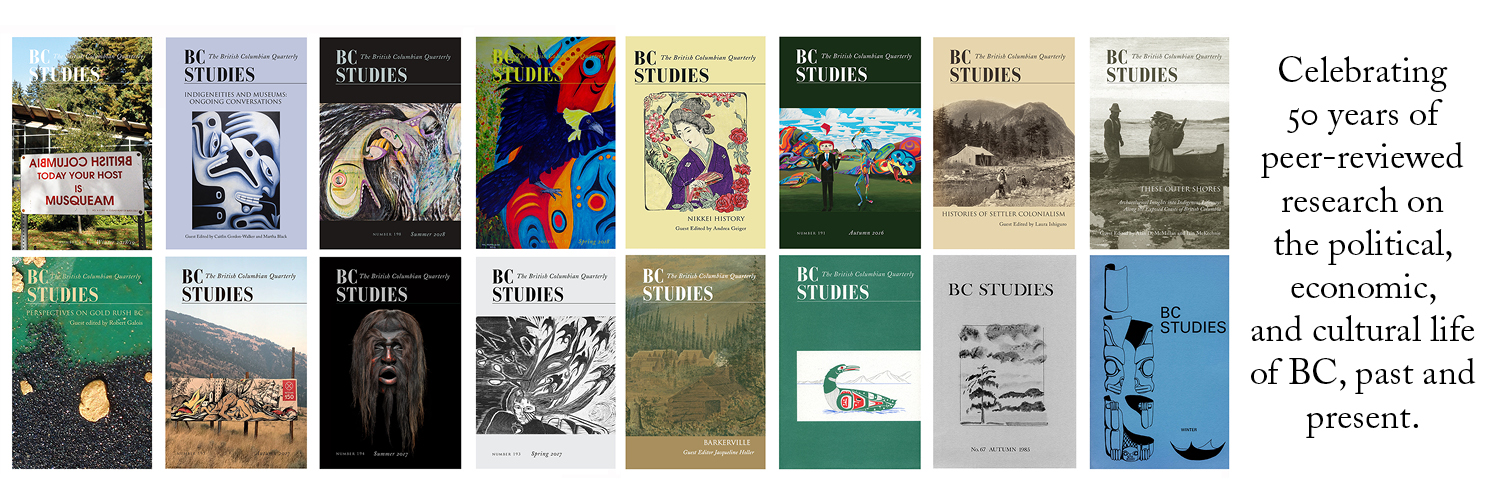“My Name Is Stanley”: Twentieth-Century Missionary Stories and the Complexity of Colonial Encounters
DOI:
https://doi.org/10.14288/bcs.v0i169.547Keywords:
Missionaries, Nlakapamux, Lytton, Stanley Eaton HiggsAbstract
Canadians today are much more aware of the negative impacts of missionization on Indigenous peoples than they were even ten years ago. However, one of the side-effects of this increased public awareness is an inverted white-washing -- a blanket labeling of all parties involved in the missionization project as uniformly “bad.” More specifically, there is a clear silence on the 2nd wave of missionization, which occurred in the early 20th century. Myriad reasons exist for this silence: one could argue that this is yet another manifestation of the “pioneer complex” at large in historical study. The problem is also rooted in feelings of guilt and discomfort in the wake of revelations about national projects of cultural genocide directed against Indigenous peoples. The first wave of missionization in BC (1850-1890) occurred in the period of early Indigenous/non-Indigenous encounter. Distanced temporally from the present, predating entrenchment of the colonial order in BC, and untainted by the excesses of the residential school system, this can be seen as perhaps a “safer” period of study. By casting “Indians” as members of mythical, pre-contact times, the ethnographic research that took root at the end of this period has remained the foundation of ethnographical research on the Northwest Coast. Whatever the reasons for this silence, the impact on BC historiography is very real. If we choose not to investigate in a respectful and critical way the histories of the many individuals involved in missionary encounters, we risk becoming complicit in the implications of the story we choose not to tell. This paper will draw on the unpublished autobiography of Reverend Canon Stanley Higgs (1904-1983), missionary to Lytton, “the Indian Headquarters” of the Anglican mission in south central British Columbia, in the 1920s and 1930s, to argue for more detailed study of the lives and writings of BC missionaries in the twentieth century. This group offers new insights into a range of areas, most notably ethnography and the local dynamics of colonialism in British Columbia.



